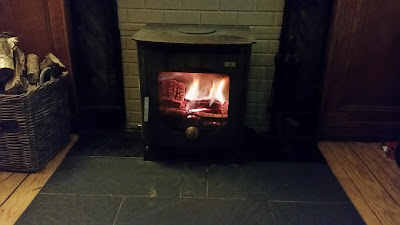In 2021 I had started a series of posts examining fairy folklore found in popular movies and shows. I've been on a bit of a hiatus from that but wanted to return to it with a look at Neil Gaiman's Coraline (the movie, not the book). Obviously I am not trying to argue here that the author's intention was to frame the story this way, although it may well have been, but what I want to do here is to highlight aspects of the movie which play into or seem to echo older fairylore.
In truth this topic deserves a full paper and a full indepth analysis, but for our purposes here I am only going to be touching on the wider ideas in more general ways to give readers an idea of the subject.
Spoilers ahead.
 |
| https://commons.wikimedia.org/wiki/File:Coraline.svg |
Coraline is a stop motion film which came out in 2009, based on the book by Neil Gaiman.
A brief synopsis: The movie opens with a short segment focused on the making of a doll, which then floats, to all appearances, into the sky at which point we segue to a girl who looks exactly like the doll. This is the eponymous main character Coraline, who we learn has just moved and is terribly bored as her parents work from home on a catalog they are writing. Coraline uses a dowsing stick to try to find an old well. She wanders to a circle of mushrooms, covering the old well, and meets her landlady's grandson, Wybie, who she says talks too much and doesn't listen. Wybie gives her the doll version of herself, saying that he had found it in his grandmother's trunk and its very old. Returning home she explores her new house, an old Victorian which has been turned into three apartments. In her home she finds a small hidden door which has been sealed off and locked, but open opening it with a very distinctive key sees only a bricked up wall. Later that night Coraline wakes from her sleep to see a jumping mouse (belonging to one of her neighbors) which leads her down to the secret door, now opening to a strange glowing tunnel. Crawling through this Coraline emerges into another world that mirrors her own, complete with alternate versions of the people she knows including her parents; they identical to the real world versions except they have buttons for eyes. The feral cat that Wybie had befriended is there as well, without button eyes but with the ability to speak. Waking up in the real world the next day she wonders if she was dreaming, so the following night she lures the mouse back and follows it a second time. The alternate world is a place that offers endless entertainment and her 'other mother' is attentive and generous in contrast to Coraline's own, busy mother. On the third day Coraline enters the secret passage while she's awake because she wants to return to the seemingly perfect world, only to find that it isn't as perfect as she'd thought. The Other Mother tells her she can stay forever if she accepts her own set of button eyes and Coraline finds herself in a battle for her own freedom and the freedom of three ghost children who had previously accepted the Other Mother's deal. Escaping home she finds that her parents have mysteriously disappeared and realizes the Other Mother has taken them prisoner to force her return. She does so and finds herself playing a game to win her freedom, the ghost children, and her parents.
Folklore in Coraline:







